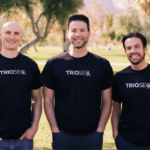Many website owners looking for methods to grow their organic traffic often need clarification about choosing the right SEO model. Should they improve their content, update backlinks, or fix JavaScript errors?
SEO is complex and involves many moving parts, such as technical SEO, on-page SEO, and off-page SEO. Each of these requires different skills and tools to implement.
In this article, we will focus on two of the most important and common types of SEO: technical SEO and on-page SEO. You will learn what they are, the best practices for each, and how to use them effectively. Let’s get started!
TL; DR – Technical SEO vs. On-Page SEO
Technical SEO and on-page SEO are essential for your website’s overall performance and visibility on search engines. Still, they have different focuses and require different skills and tools to work effectively.
Technical SEO involves optimizing the technical elements of your website, such as page speed, crawlability, indexing, security, and more. Meanwhile, on-page SEO involves optimizing your web pages’ content and user experience, such as keyword research, content creation, title tags, meta descriptions, and more.
Learn more about our SEO process and how we can help your website with technical and on-page SEO.

What is Technical SEO?
Let’s look at the use and importance of technical SEO and an overview of its implementation.
Overview and Definition of Technical SEO
Technical SEO deals with optimizing the technical elements of your website that are relevant to search engines and achieving higher rankings in the search results. It involves improving your page load speed, optimizing your site’s crawlability and indexing, submitting your sitemap to Google, implementing schema markup, etc.
Technical SEO differs from on-page SEO, which optimizes your website’s content and user experience. On-page SEO includes keyword research, content creation, title tags, meta descriptions, internal linking, and more.
Why is Technical SEO Important?
Technical SEO is vital because it helps your website function properly and efficiently. It also improves your website’s user experience, directly affecting your rankings and conversions.
Benefits of Technical SEO:
- It can increase your site’s crawlability and indexability so search engines can easily find and comprehend your web pages, leading to more organic traffic and visibility.
- Technical SEO improves your site’s speed and performance, reducing bounce rates and increasing page time. Remember that page load speed is a crucial ranking factor for desktop and mobile searches.
- It also enhances your site’s security and trustworthiness, which can protect your website from hackers and malware. In recent years, security has become an important ranking factor for Google.
- Technical SEO can optimize your site’s structure and navigation, making it easier for users and search engines to find and access your content. A well-structured site can also improve your internal linking and site architecture, boosting your site’s authority.
As you can infer, technical SEO can significantly impact your website’s performance and ranking potential. However, it is not a one-time thing. It requires constant monitoring and changes to ensure a website is up-to-date and compliant with the latest search engine guidelines and ideal practices.

Technical SEO Checklist
Here are the crucial aspects to check for when implementing technical SEO.
Site Structure and URL Optimization
Site structure and URL optimization are two aspects of technical SEO that affect how your website is arranged and presented to users and search engines. A good site structure and URL optimization can improve your site’s usability, navigation, and relevance.
Some of the best practices for site structure and URL optimization are:
- Use a hierarchical website structure that groups related content into categories and subcategories.
- Optimize your URLs to be simple, descriptive, and consistent. Use keywords in URLs that reflect the main topic of each page, and avoid unnecessary words, characters, or parameters.
- Create a shallow-depth navigation structure that allows users and search engines to access any page on your website with a few clicks.
- Establish your header and footer to display important information and links on every website page.
Site Speed and Performance Optimization
Site speed and performance optimization are crucial for technical SEO, as they affect how fast and smoothly your website loads and functions on different devices and browsers. A fast and high-performing website can enhance user experience, reduce bounce rates, and increase conversions.
Fun Fact: The attention span of web page visitors lies between 8 to 12 seconds. So, you must optimize your web pages (interface, load times, content, etc.) to grab the visitor’s attention.
Some of the best practices for site speed and performance optimization are:
- Minify and compress your HTML, CSS, and JavaScript files to reduce their size.
- Optimize images and media to fit the dimensions and resolution of your web pages, and use appropriate formats and compression techniques to reduce their file size.
- Use caching to store copies of your web pages and resources on the browser or server and serve them to the user without having to request them from the origin server every time.
- Use the hosting services of a content delivery network (CDN) to distribute your web pages and resources across multiple servers worldwide and serve them to the user from the nearest server.

Mobile-Friendliness and Responsive Design
Mobile-friendliness and responsive design are essential for technical SEO, as they ensure that your website adapts to the device and screen size of the user’s device. Additionally, it provides a consistent and optimal user experience. A mobile-friendly and responsive website can increase your reach, engagement, and conversions.
Some of the best practices for mobile-friendliness and responsive design are:
- Use a flexible layout that uses relative units and media queries to adjust the width, height, and position of your web page elements depending on the screen size of the user’s device.
- Use a readable and legible typography that uses appropriate font size, line height, and contrast to display your text content clearly and comfortably on different devices and screen sizes.
- Implement a touch-friendly (for touchscreen devices) and intuitive navigation that uses appropriate size, spacing, and placement for your navigation elements, such as menus, buttons, and links, to make them easy to access.
Security and HTTPS Implementation
Security and HTTPS implementation are vital for technical SEO, as they protect your website from hackers and malware. They also ensure the privacy and integrity of the data exchanged between your website and the user. A secure website with HTTPS improves your website’s trustworthiness, authority, and rankings.
Some of the best practices for security and HTTPS implementation are:
- Use a secure and reliable web hosting service that offers SSL certificates, firewalls, backups, malware scanning, and DDoS protection.
- Utilize the HTTPS protocol (through SSL certificates) to encrypt the communication between your website and the user and protect your website from hackers and malware.
- Use strong passwords for your website and change them regularly.
- Use security plugins and tools to monitor and scan your website for vulnerabilities or suspicious activity.

What is On-Page SEO?
On-page SEO refers to optimizing your web pages’ content and user experience to rank better in SERPs and earn better traffic from search engines.
Overview and Definition of On-Page SEO
On-page SEO deals with optimizing your web pages’ content and user experience for both search engines and users. It can help rank pages higher and drive more organic traffic.
Some of the most common tasks related to on-page SEO are updating title tags, meta descriptions, header tags, internal links, URLs, keyword research, creation of content, and more.
On-page SEO differs from off-page SEO, which refers to the actions taken outside your website, such as earning backlinks, social media, and online reviews, to boost your reputation and authority for search engines.
All three types of SEO (On-page, off-page, and technical) are essential for your website’s performance and visibility on search engines.
On-Page SEO Checklist
Here are the fundamental factors you need to adjust for on-page optimization.
High-Quality Content Creation and Optimization
Content is at the core of on-page SEO, as it determines the value and relevance of your web pages. High-quality content is original, informative, engaging, and valuable for your target audience. It can include different types of content, such as text, images, videos, infographics, podcasts, etc.
Some best practices for high-quality content creation and optimization are:
- Conduct thorough keyword research and targeting to identify your web pages’ most relevant and profitable keywords and use them strategically and naturally throughout your content.
- Create original and unique content that is helpful and offers a unique perspective to your audience.
- Write clear and compelling content that follows the Google E-E-A-T (Experience, Expertise, Authoritativeness, and Trustworthiness) principle and showcases your knowledge and credibility on the topic.
- Optimize your content for readability and use short paragraphs, sentences, and words to convey your message clearly and concisely.
- Use multimedia and visual content to enhance and support your text content and provide more information and engagement to your audience.
Proper Keyword Research and Targeting
Keyword research helps understand your target audience’s search intent and optimize your web pages to gain traffic from the most relevant and profitable keywords.
Some of the best practices for proper keyword research and targeting are:
- Use keyword tools or resources to find keyword ideas, search volume, difficulty, and competition for your web pages.
- Analyze your competitors’ keywords and web pages to find gaps and opportunities for your web pages and learn from their strengths and weaknesses.
- Choose and prioritize your keywords based on their relevance, popularity, and profitability for your web pages, and use them naturally throughout your content. Avoid keyword stuffing, as it can harm your rankings and user experience.
- Track and measure your keyword performance and results using analytics tools or resources, and adjust as needed.
Titles, Meta Descriptions, and Header Tags Optimization
Titles, meta descriptions, and header tags are essential elements of on-page SEO, as they affect how your web pages are displayed and perceived on search engines and by users.
They are also known as HTML tags, snippets of code that provide information and instructions to search engines and browsers about your web pages.
Some of the best practices for titles, meta descriptions, and header tags optimization are:
- Optimize your titles to be unique, descriptive, and concise, and use your primary keyword and brand name at the beginning or end of your titles.
- Create your meta descriptions to be informative, persuasive, and enticing, and use your primary keyword and a call to action at the beginning or end of your meta descriptions.
- Use related keywords and ensure your header tags are clear, logical, and hierarchical. You should also use different levels of header tags, such as H1, H2, H3, etc., to structure and organize your content and avoid using duplicate or misleading header tags.

On-Page User Experience Factors
On-page user experience factors are essential for SEO, affecting how users interact and engage with your web pages and website. It covers aspects like site speed, navigation, design, layout, readability, scannability, etc.
The best practices for on-page user experience factors are:
- Optimize your site speed and performance to make your web pages load faster and smoother on different devices and browsers.
- Upgrade the navigation and design for web pages.
- Adjust your layout and readability to make web pages easy to read and understand on different devices and screen sizes.
Internal Linking
Internal linking refers to linking your web pages to other web pages on your website that support and add value to your content.
Doing this can help you improve your on-page SEO, as well as your user experience and conversions.
Some of the best practices for internal linking are:
- Use descriptive and relevant anchor text to link your web pages, and use your target keywords and variations throughout your anchor text.
- Link your web pages to other relevant and valuable web pages on your website, and use a logical and natural linking structure.
- Connect the most essential and popular web pages, such as your homepage and category pages, and use a consistent and clear navigation menu and footer to link to these web pages.

Technical SEO vs. On-Page SEO – Comparison Table
Here, we will compare and contrast technical SEO and on-page SEO based on their characteristics, goals, and examples. The table below summarizes the differences and similarities between these two types of SEO.
| Characteristic | Technical SEO | On-Page SEO |
|---|---|---|
| Focus Area | Source code optimization | Content of individual pages |
| Primary Goal | Improve crawlability and site structure | Optimize individual pages for specific keywords and user experience |
| Key Elements | Site speed, mobile-friendliness, SSL/HTTPS, XML sitemaps | Content quality, keyword optimization, meta tags, image optimization |
| Implementation | Mostly backend and server-side changes | Frontend changes, content creation |
| Measurement | Crawl reports, site audits | SERP rankings, keyword performance |
| Impact on User Experience | Indirect (through site performance) | Direct (content relevance and quality) |
| Impact on Search Rankings | High (especially for large websites) | High (affects how search engines perceive content) |
| Tools and Techniques | Crawling and indexing tools, server logs | Keyword research tools, content management systems |
How to Implement Technical SEO and On-Page SEO Together
Here, we will explain how to implement technical SEO and on-page SEO together and achieve the best results for your website. We will also explore balancing technical factors with user experience considerations and creating a valuable website.
Ensure Proper Technical Foundation
The first step to implementing technical SEO and on-page SEO together is ensuring your website has a proper technical foundation. It means you should audit and fix any technical issues or errors affecting your website’s performance, functionality, or compliance with search engines.
Some of the common technical issues or errors that you should check and fix are:
- Broken links/ images.
- Missing/ incorrect sitemap or robots.txt files.
- Missing/ incorrect SSL certificates or HTTPS.
- Slow page load speed times.
- Difficulties in indexing for search engines
- Duplicate content (this is a big one!)
- Incorrect schema markup.
- Incorrect or false titles, meta descriptions, or header tags
- Misaligned redirects or error pages (such as 404).
You can use technical SEO tools (such as Ahrefs or Google Search Console) and resources to audit and fix these technical issues and follow the best practices for optimization.
By ensuring that your website has a proper technical foundation, you can improve your website’s performance and quality on search engines and avoid any penalties or ranking losses.
Create Valuable and Engaging Content
The second step is to create valuable and engaging content for your web pages while adhering to the search engine’s technical guidelines and best practices. You should create original, informative, engaging, and valuable content for your target audience and optimize for SEO using your target keywords and HTML tags.
It helps improve your website’s value and relevance for users and search engines. Valuable content is highly likely to be shared and linked to, helping your website gain more visitors and backlinks.
Balance Technical Factors with UX
The third step to implementing technical SEO and on-page SEO together is to balance technical factors with user experience considerations and create a functional and valuable website.
You should optimize your website for both search engines and users and consider how your technical choices and changes may affect your user experience and satisfaction.
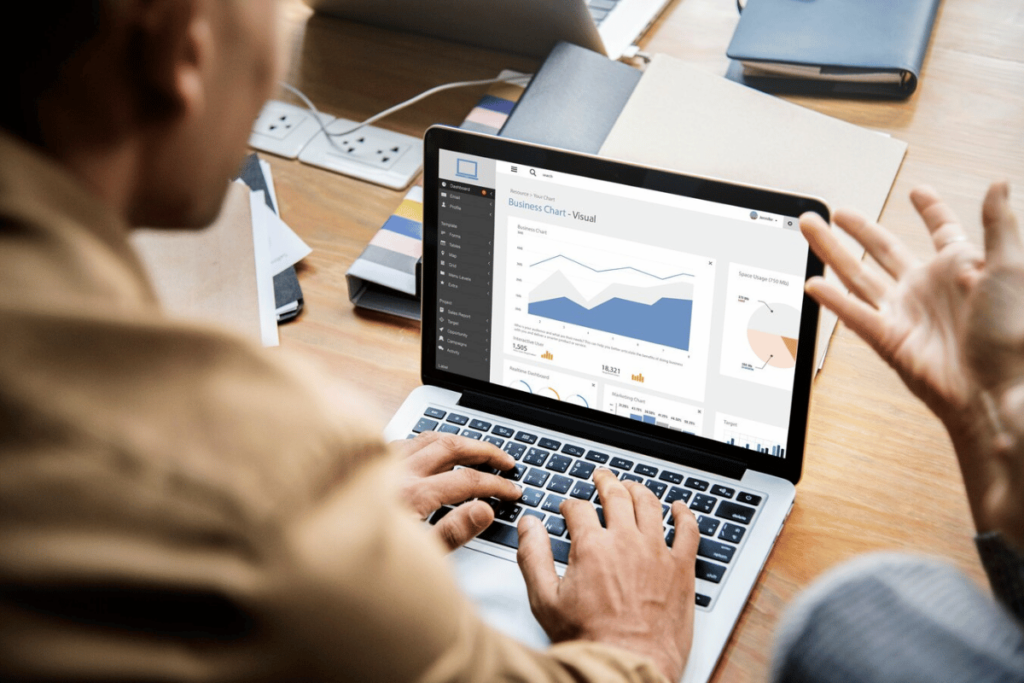
Bottom Line – Choosing Between Technical SEO and On-Page SEO
Technical SEO and on-page SEO are essential and complementary for your website’s performance and visibility on search engines. They should be implemented together to achieve the best results for your website. Depending on your website’s needs and goals, you may need to prioritize one or balance them differently.
In this part, we will provide some tips and examples on choosing between technical SEO and on-page SEO and when to prioritize one.
Here’s When to Prioritize Technical SEO
Technical SEO is the base of your website’s performance and visibility on search engines, and it should be implemented before you focus on on-page SEO or off-page SEO. It can help you ensure that your website is functional and efficient on search engines and works as per the latest search engine guidelines and trends.
Some of the scenarios when you should prioritize technical SEO are:
Website Redesigning or Migration
Suppose you are planning to redesign or migrate your website. In that case, you should prioritize technical SEO and make sure that your website’s technical elements, such as page speed, crawlability, indexing, security, etc., are not affected by the redesign or migration.
Troubleshooting Indexing or Crawling Issues
When you encounter indexing or crawling issues on your website, such as missing or incorrect sitemap or robots.txt files, low crawlability or indexability, duplicate or thin content, etc. In that case, you should prioritize technical SEO and diagnose and fix these issues immediately.
Improving Site Speed and Performance
If you want to improve your website’s site speed and performance, which are essential ranking factors for search engines, you should prioritize technical SEO and implement the best practices for site speed and performance optimization.
It includes adjustments such as minifying and compressing your HTML, CSS, and JavaScript files, optimizing your images and media, using caching and CDN, etc.
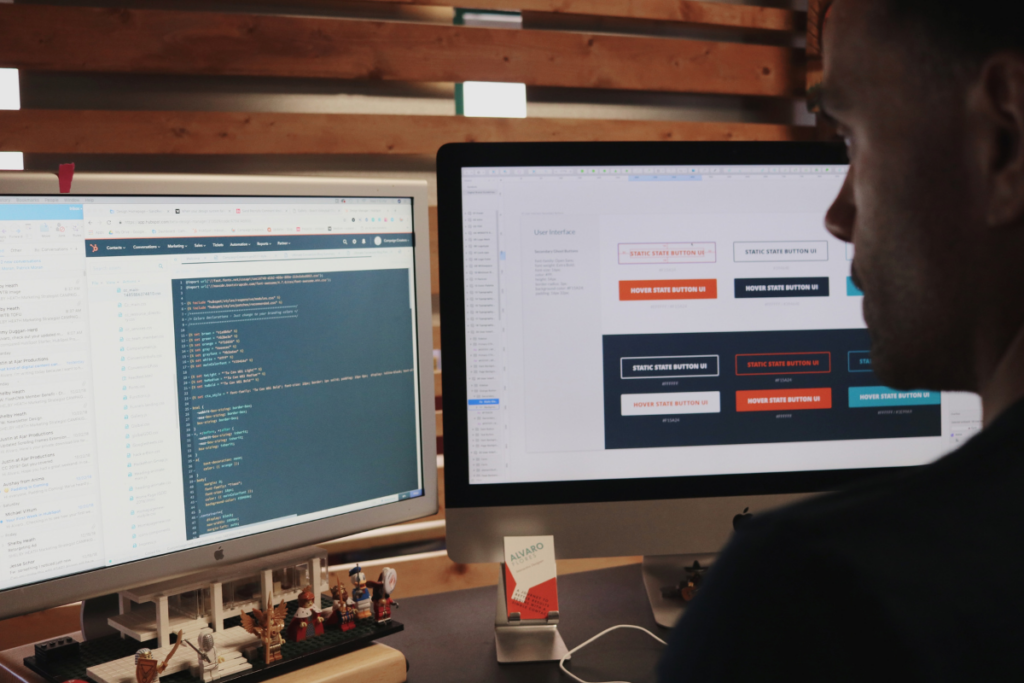
Here’s When to Prioritize On-Page SEO
On-page SEO is the core of your website’s value and relevance for both users and search engines, and it should be implemented only after you have a proper technical foundation for your website.
On-page SEO can help you optimize your website’s content and user experience and ensure that your website provides the best answer or solution to the user’s query and intent.
Some of the scenarios when you should prioritize on-page SEO are:
Creating Optimized Content for a Specific Target Audience
If you are creating new content or updating existing content for your web pages, you should prioritize on-page SEO and optimize your content for SEO. Use your target keywords and HTML tags, and ensure that your content is original, informative, engaging, and valuable for your target audience.
Optimizing Existing Content for Better Rankings
Suppose you want to optimize your existing content for better rankings on search engines. In that case, you should prioritize on-page SEO, improve your content’s quality, relevance, and authority, and ensure your content matches the user’s query and intent.

Frequently Asked Questions
Here are your answers to some frequently asked technical and on-page SEO questions.
Is Technical SEO Part of Off-Page SEO?
No, technical SEO is not strictly part of Off-Page SEO. They are different and have different methods and objectives. Technical SEO generally involves optimizing the technical elements of your website, such as page speed, crawlability, indexing, security, and more. On the other hand, Off-page SEO involves optimizing the external factors that affect your website’s reputation and authority, such as backlinks, online reviews, and social media.
Does On-Page SEO Totally Depend on Technical SEO?
On-page SEO only partially depends on technical SEO, but it does rely on it to a large extent. On-page SEO and technical SEO are both essential for your website’s performance and visibility on search engines, and they should be implemented together to achieve the best results.
On-page SEO involves optimizing the content and user experience of your web pages. Technical SEO, on the other hand, consists of optimizing the technical elements of your website.
Which Technical SEO Issues Are Most Important?
The most important technical SEO issues affect your website’s functionality or compliance with search engines, negatively impacting your rankings, traffic, or conversions.
Some of the most common and critical technical SEO issues are:
- Site speed and performance issues.
- Crawlability and indexability issues.
- Sitemap and robots.txt issues.
- Schema markup and rich snippets issues.
Conclusion
Technical SEO and on-page SEO are both essential for your website’s performance and visibility on search engines. Applying them all together will result in best practices and performance for your website.
However, depending on your website’s custom requirements, you may need to balance them differently. Need help with which SEO technique to implement?
Let us help you with our comprehensive SEO services and extensive experience in this field. Connect with us, and we’ll reach out to you with the next steps.


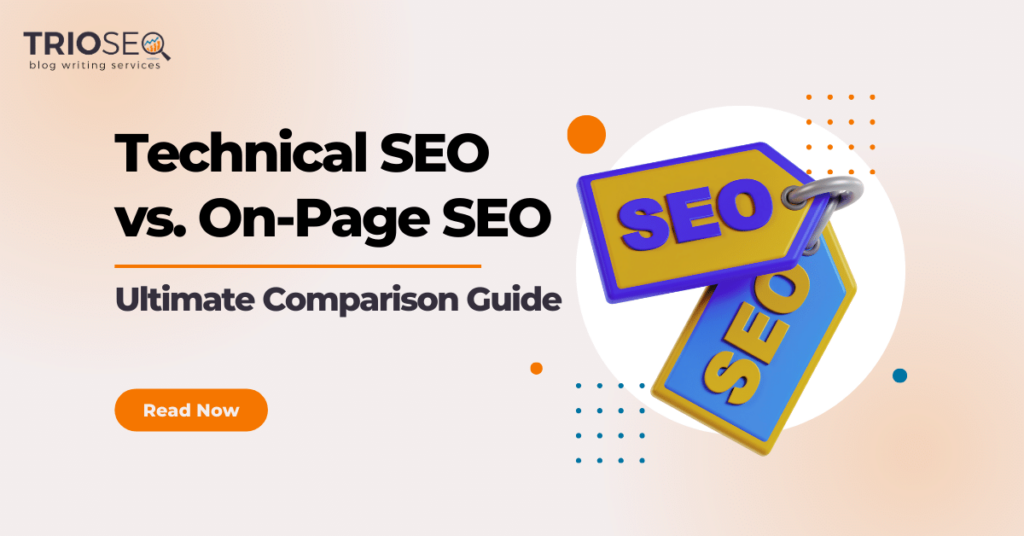

![Featured Image - Mental Health Content Writing [Best Practices and Ethical Considerations]](https://trioseo.com/wp-content/uploads/2024/05/Mental-Health-Content-Writing-Best-Practices-and-Ethical-Considerations-300x157.png)
![Featured Image - Beginner’s Guide to CBD Content Writing [Tips Included]](https://trioseo.com/wp-content/uploads/2024/05/Beginners-Guide-to-CBD-Content-Writing-Tips-Included-300x157.png)
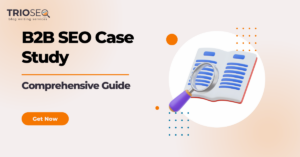
![Featured Image - [Ultimate Guide] SEO For Tech Companies That Outranks Competitors](https://trioseo.com/wp-content/uploads/2024/04/Ultimate-Guide-SEO-For-Tech-Companies-That-Outranks-Competitors-300x157.png)
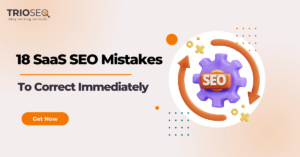
![Featured Image - B2B SaaS SEO - Ultimate Guide [Strategy Included]](https://trioseo.com/wp-content/uploads/2024/04/B2B-SaaS-SEO-Ultimate-Guide-Strategy-Included-300x157.png)

